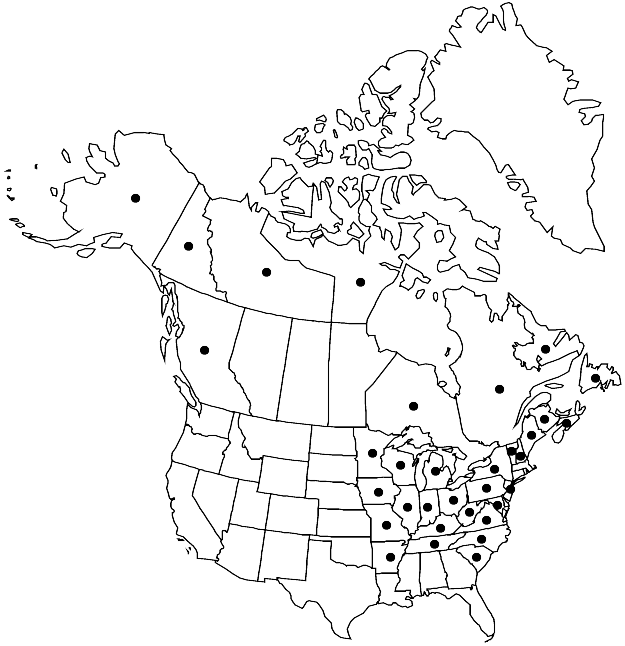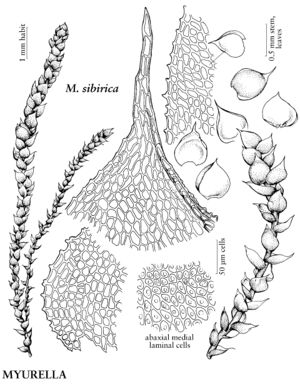Myurella sibirica
Hedwigia 76: 292. 1937.
Plants green, glaucous. Stem-leaves loosely erect to widespreading, distant, ovate, 0.4–0.6 mm; margins irregularly dentate to spinose-dentate; apex long-apiculate to slender-acuminate; distal laminal cells strongly 1-papillose abaxially.
Habitat: Mesic, calcareous rock crevices
Elevation: low to moderate elevations
Distribution

B.C., N.B., Nfld. and Labr., N.W.T., N.S., Nunavut, Ont., Que., Yukon, Alaska, Ark., Ill., Ind., Iowa, Ky., Maine, Md., Mich., Minn., Mo., N.H., N.J., N.Y., N.C., Ohio, Pa., S.C., Tenn., Vt., Va., W.Va., Wis., Europe, n Asia
Discussion
Myurella sibirica is common in the East but becomes rare in northwestern North America. Small, slender, glaucous plants with widely spaced leaves and very large papillae distinguish this species. The leaves end in a rather long, slender apiculus, and the margins are distinctly and irregularly serrulate. The large central papillae and strongly toothed leaf margins distinguish this species from M. julacea and M. tenerrima.
Selected References
None.
